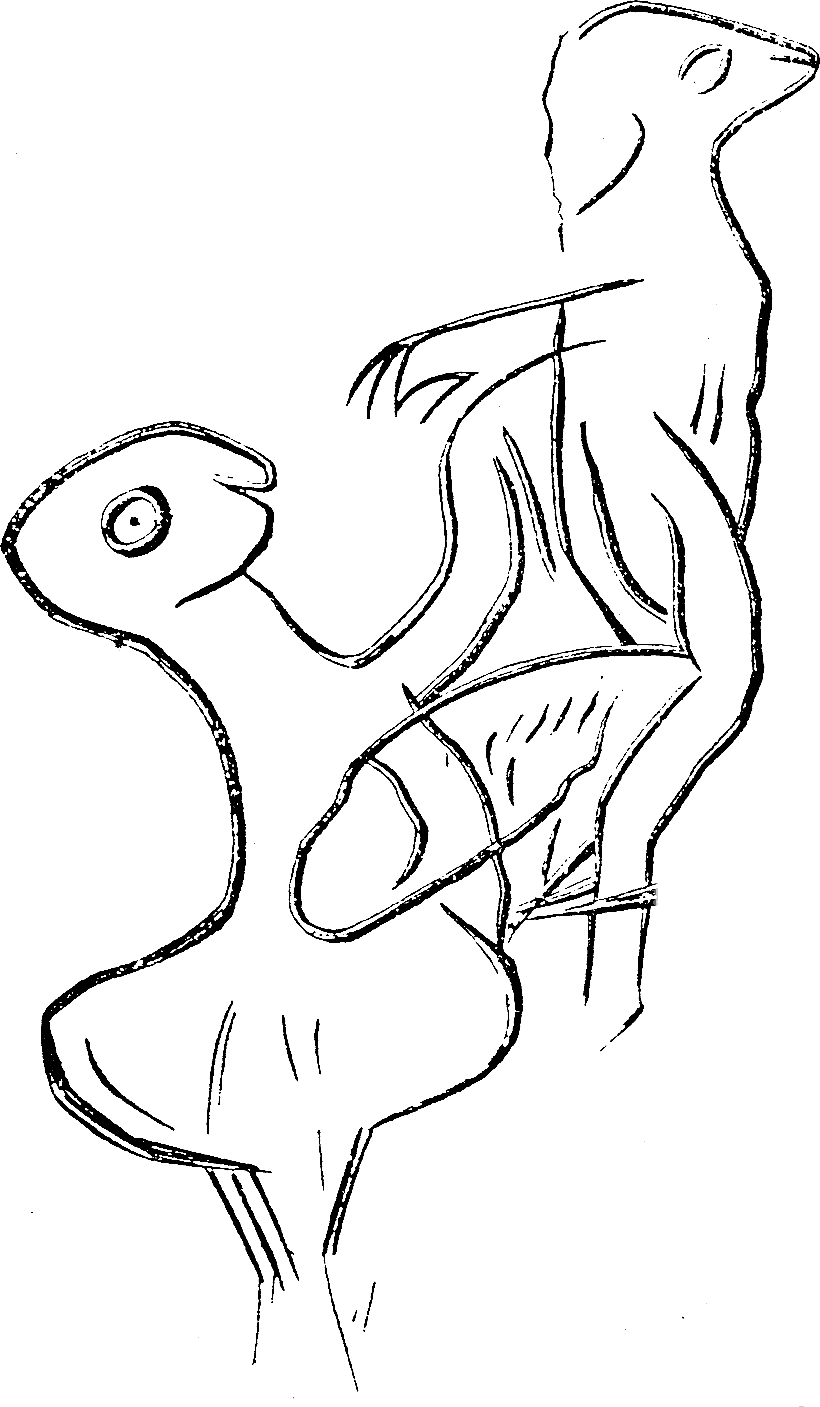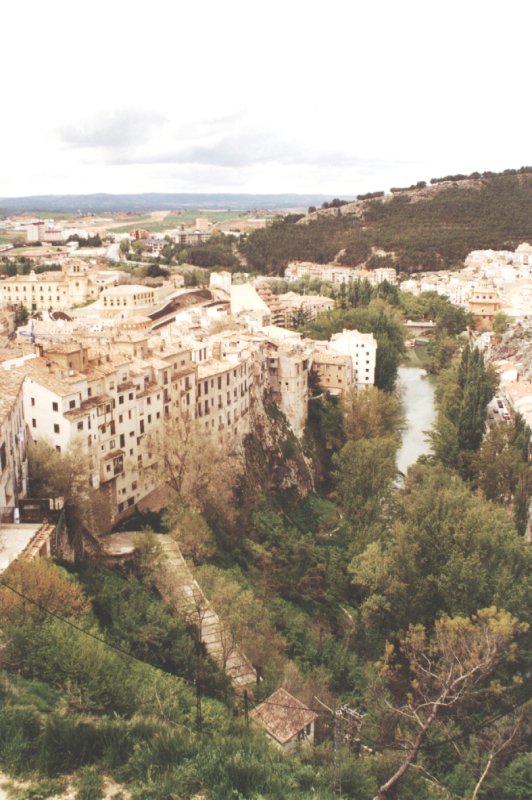|
Tagus-Segura Water Transfer
The Tagus-Segura Water Transfer (Spanish language, Spanish: ''Trasvase Tajo-Segura'') is one of the largest works of hydraulic engineering ever produced in Spain. Water from the Tagus River is channeled through this Interbasin transfer, transfer system from the reservoirs of Entrepeñas Reservoir, Entrepeñas (Province of Guadalajara) and Buendía (Province of Cuenca) into the Talave Reservoir on the Mundo River, a tributary of the Segura River. History Although it was mentioned as early as 1902, the origin of the transfer system dates back to 1932, when the Ministry of Public Works and Transport (Spain), Minister of Public Works Indalecio Prieto entrusted engineer with the formulation of a plan for the Water resource management, management of national water resources. A year later, he presented the ''Plan Nacional de Obras Hidráulicas'' (National Plan of Hydraulic Works), which included the Tagus-Segura Water Transfer; however, for various reasons, the plan was never realize ... [...More Info...] [...Related Items...] OR: [Wikipedia] [Google] [Baidu] |
Province Of Guadalajara
Guadalajara () is a province of Spain, belonging to the autonomous community of Castilla–La Mancha. As of 2013 it had a population of 257,723 people. The population of the province has grown in the last 10 years. It is located in the centre of the Iberian Peninsula. History Prehistory The province has been inhabited since the Paleolithic as evidenced by stone tools found on the banks of the Henares and Linares rivers. There are also numerous prehistoric cave paintings in the Cueva de los Casares in Riba de Saelices while Megalithic tombs from the 4th millennium B.C. have been found at various sites in the province including Alcolea del Pinar. There are remains of several Bronze Age settlements along the river banks in the area, notably that in Loma del Lomo in Cogolludo as well as a late Bronze Age settlement in Mojares. Celtiberians and Romans The Celtiberians occupied the territory during the late Iron Age between the 6th and 3rd centuries B.C. in Sigüenza, Atienza, an ... [...More Info...] [...Related Items...] OR: [Wikipedia] [Google] [Baidu] |
Ministry Of Public Works And Transport (Spain)
The Ministry of Transport, Mobility and Urban Agenda (MITMA) ( es, Ministerio de Transportes, Movilidad y Agenda Urbana), traditionally known as the Ministry of Development (MFOM), is the department of the Government of Spain responsible for preparing and implementing the government policy on land, air and maritime transport infrastructure and the control, planning and regulation of the transport services on this areas. It is also responsible for guaranteeing access to housing; urban, soil and architecture policies; planning and controlling the postal and telegraph services, directing the services related to astronomy, geodesy, geophysics and mapping, and planning and programing the government investments on infrastructure and services related to this scope. The Ministry's headquarters are in the New Ministries government complex. MITMA is headed by the Minister of Transport, Mobility and Urban Agenda, who is appointed by the King of Spain at request of the Prime Minister. The ... [...More Info...] [...Related Items...] OR: [Wikipedia] [Google] [Baidu] |
Mundo (river)
The Mundo is a river in south-eastern Spain. It originates slightly south of Riópar in the mountain plateau ''Calar del Mundo''. From there it flows towards Riopar and then westwards until it joins the Segura south of Hellín.''map of hydrographic network and infrastructures'' auf chsegura.es (retrieved 2012-12-8) The Mundo has a length of 150 km and a drainage area of 766 km2. auf chsegura.es (retrieved 2012-12-8) The river receives most of its tributaries in its upper course. They include the Rio de la Vega, the Rio ... [...More Info...] [...Related Items...] OR: [Wikipedia] [Google] [Baidu] |
Júcar River
left The Júcar () or Xúquer () is a river on the Iberian Peninsula of Spain. The river runs for approximately 509 km from its source at Ojuelos de Valdeminguete, on the eastern flank of the Montes Universales, Sistema Ibérico. Its most important tributary is the Cabriel. River Júcar flows first southward and then eastward through the towns of Cuenca, Alcalá del Júcar, Cofrentes, Alzira, Sueca and Cullera, a town located near its mouth into the Gulf of Valencia, Mediterranean Sea. It crosses the provinces of Cuenca, Albacete and Valencia In 1982 the river Júcar broke the Tous's reservoir, causing the biggest flood in Spanish history with a flow speed of 16,000 cubic metres per second, killing more than 30 people. This flood was the most important one in the whole history of Spain in that times because the people thought that the Tous reservoir was indestructible. The flood was called ''La pantanada de Tous''. See also * List of rivers of Spain * Rambla del Poyo ... [...More Info...] [...Related Items...] OR: [Wikipedia] [Google] [Baidu] |
Alarcón Reservoir
Alarcón is a municipality in the province of Cuenca, in the autonomous community of Castilla-La Mancha, Spain. Geography Located 87 kilometers (54 miles) south of the city of Cuenca, Alarcón spans an area of 120 km² (50 sq mi) at an elevation of 831 meters (2,726 feet). It is situated on a promontory within a closed bend of the Júcar River. Not far downstream from the Alarcón Dam, an important reservoir, the town also has the smaller Dam of Henchidero at its doorstep. Demographics According to the 2013 municipal registry of the National Statistics Institute (INE, ''Instituto Nacional de Estadística''), the town population of 159 inhabitants yields a density of 1.3 people per km² (3.4 per sq mi). History Of Iberian and Roman origins, Alarcón first appears in recorded history at its occupation by the Arabs, to whom it owes the construction of the primitive castle on which the existing one is based. The history of Alarcón is governed by its role as a stronghol ... [...More Info...] [...Related Items...] OR: [Wikipedia] [Google] [Baidu] |
Francis Turbine
The Francis turbine is a type of water turbine. It is an inward-flow reaction turbine that combines radial and axial flow concepts. Francis turbines are the most common water turbine in use today, and can achieve over 95% efficiency. The process of arriving at the modern Francis runner design took from 1848 to approximately 1920. It became known as the Francis turbine around 1920, being named after British-American engineer James B. Francis who in 1848 created a new turbine design. Francis turbines are primarily used for producing electricity. The power output of the electric generators generally ranges from just a few kilowatts up to 1000 MW, though mini-hydro installations may be lower. The best performance is seen when the head height is between . Penstock diameters are between . The speeds of different turbine units range from 70 to 1000 rpm. A wicket gate around the outside of the turbine's rotating runner controls the rate of water flow through the turbine for d ... [...More Info...] [...Related Items...] OR: [Wikipedia] [Google] [Baidu] |
Pumped-storage Hydroelectricity
Pumped-storage hydroelectricity (PSH), or pumped hydroelectric energy storage (PHES), is a type of hydroelectric energy storage used by electric power systems for load balancing. The method stores energy in the form of gravitational potential energy of water, pumped from a lower elevation reservoir to a higher elevation. Low-cost surplus off-peak electric power is typically used to run the pumps. During periods of high electrical demand, the stored water is released through turbines to produce electric power. Although the losses of the pumping process make the plant a net consumer of energy overall, the system increases revenue by selling more electricity during periods of peak demand, when electricity prices are highest. If the upper lake collects significant rainfall or is fed by a river then the plant may be a net energy producer in the manner of a traditional hydroelectric plant. Pumped-storage hydroelectricity allows energy from intermittent sources (such as solar, wind ... [...More Info...] [...Related Items...] OR: [Wikipedia] [Google] [Baidu] |
Efficient Energy Use
Efficient energy use, sometimes simply called energy efficiency, is the process of reducing the amount of energy required to provide products and services. For example, insulating a building allows it to use less heating and cooling energy to achieve and maintain a thermal comfort. Installing light-emitting diode bulbs, fluorescent lighting, or natural skylight windows reduces the amount of energy required to attain the same level of illumination compared to using traditional incandescent light bulbs. Improvements in energy efficiency are generally achieved by adopting a more efficient technology or production process or by application of commonly accepted methods to reduce energy losses. There are many motivations to improve energy efficiency. Decreasing energy use reduces energy costs and may result in a financial cost saving to consumers if the energy savings offset any additional costs of implementing an energy-efficient technology. Reducing energy use is also seen as a s ... [...More Info...] [...Related Items...] OR: [Wikipedia] [Google] [Baidu] |
Ministry Of Agriculture, Food And Environment (Spain)
The Ministry of Agriculture, Fisheries and Food ( es, Ministerio de Agricultura, Pesca y Alimentación, MAPA), is the department of the Government of Spain responsible for proposing and carrying out the government policy on agricultural, livestock and fishery resources, food industry, rural development and human food. The Ministry is responsible for assigning Veterinary Surgeons to carry out checks in regard to the issuing oREGA Licences(''Registro de Explotación'') a requirement for the ownership of horses on Spanish property and small holdings. Specifically, it corresponds to the MAPA the preparation of State legislation on agriculture, fisheries and food; the proposal and carrying out of the general guidelines of the Government on agricultural, fisheries and food policies; the representation of Spain in the international organizations corresponding to these matters; as well as the coordination of actions, cooperation and agreement in the design and application of all policies ... [...More Info...] [...Related Items...] OR: [Wikipedia] [Google] [Baidu] |
Volumetric Flow Rate
In physics and engineering, in particular fluid dynamics, the volumetric flow rate (also known as volume flow rate, or volume velocity) is the volume of fluid which passes per unit time; usually it is represented by the symbol (sometimes ). It contrasts with mass flow rate, which is the other main type of fluid flow rate. In most contexts a mention of ''rate of fluid flow'' is likely to refer to the volumetric rate. In hydrometry, the volumetric flow rate is known as '' discharge''. Volumetric flow rate should not be confused with volumetric flux, as defined by Darcy's law and represented by the symbol , with units of m3/(m2·s), that is, m·s−1. The integration of a flux over an area gives the volumetric flow rate. The SI unit is cubic metres per second (m3/s). Another unit used is standard cubic centimetres per minute (SCCM). In US customary units and imperial units, volumetric flow rate is often expressed as cubic feet per second (ft3/s) or gallons per minute (either ... [...More Info...] [...Related Items...] OR: [Wikipedia] [Google] [Baidu] |
Bolarque Dam
Bolarque Dam ( es, Presa de Bolarque, links=no) is a concrete gravity dam on the Tagus in Spain, where the river forms the border between the provinces of Cuenca and Guadalajara. About 6 km downstream from the dam is the José Cabrera Nuclear Power Station. Work on the dam began in 1907. In 1908 more than 1300 workers were employed at the construction site. The dam was officially inaugurated on June 23, 1910 by king Alfonso XIII. It is owned by Unión Fenosa. Dam Bolarque Dam is a 36 m tall (height above foundation) and 292 m long gravity dam with a crest altitude of 643 m. The volume of the dam is 160,000 m³. The dam features a spillway over the dam (maximum discharge 1,700 m³/s) and one bottom outlet (maximum discharge 70 m³/s). The initial height of the dam was 24 m; it was raised to 36 m in 1954. Reservoir At full reservoir level, the reservoir of the dam has a surface area of 5.1 km² and a total capacity of 30.7 mio. m³; its active capacity is 23 mio. m³. Power plant ... [...More Info...] [...Related Items...] OR: [Wikipedia] [Google] [Baidu] |
Ministerial Decree
A ministerial decree or ministerial order is a decree by a ministry. With a ministerial decree the administrative department is delegated the task to impose a formal judgement or mandate. Ministerial decrees are usually imposed under the authority of the department's chief minister, secretary or administrator. Belgium In Belgium, a ministerial decree ( nl, ministerieel besluit, french: arrêté ministériel) is a decision of a minister of the federal government. The Belgian Constitution stipulates that the King of Belgium, in practice the federal government as a whole, is responsible for the execution of laws adopted by the federal parliament. This is done by royal order. For more detailed measures, the minister responsible can act alone by ministerial order. Ministerial orders must be published in the Belgian Official Journal before they can enter into force. Canada In Canada, a ministerial order (french: arrêté ministériel) is a decision made by a Minister of the Crown, ... [...More Info...] [...Related Items...] OR: [Wikipedia] [Google] [Baidu] |
.jpg)





.jpg)
.jpg)
